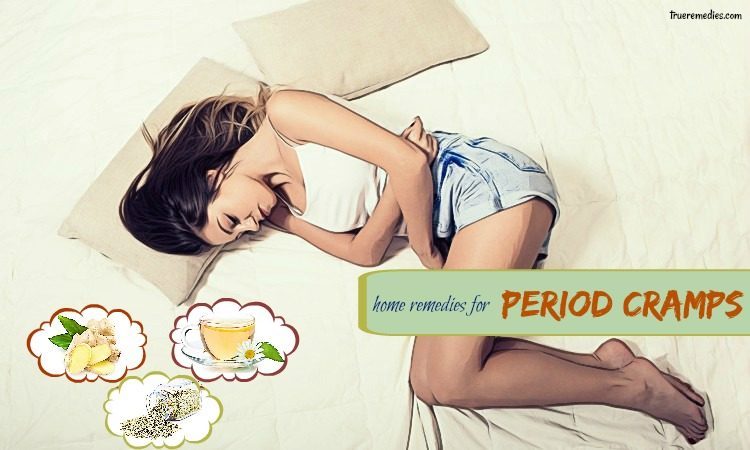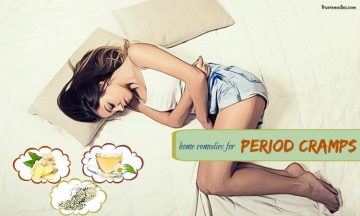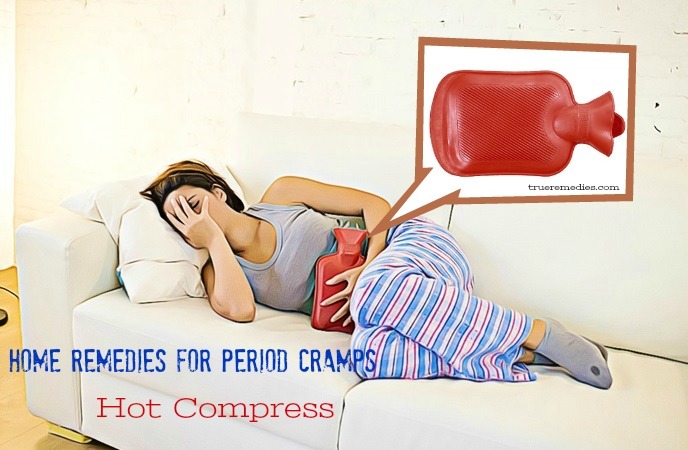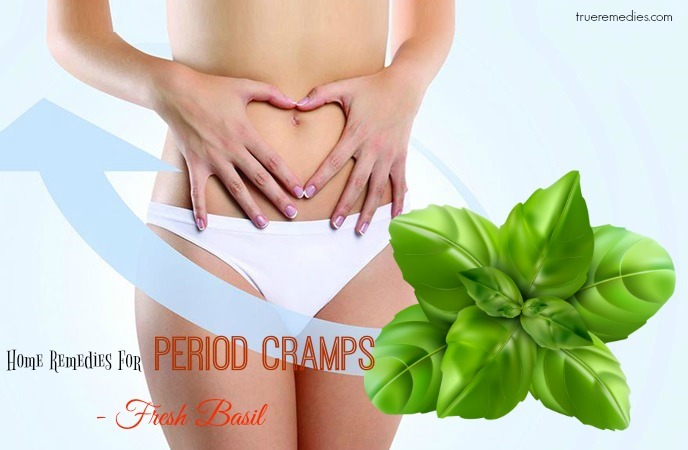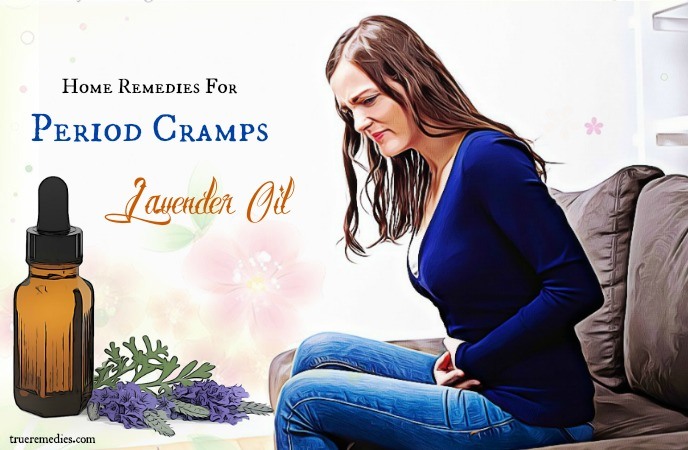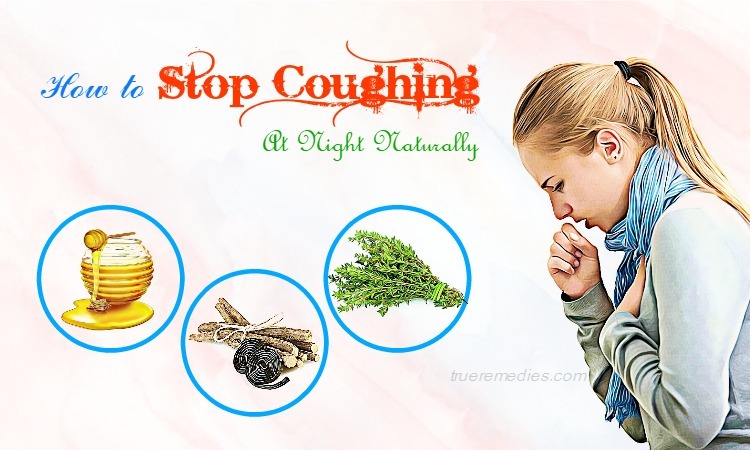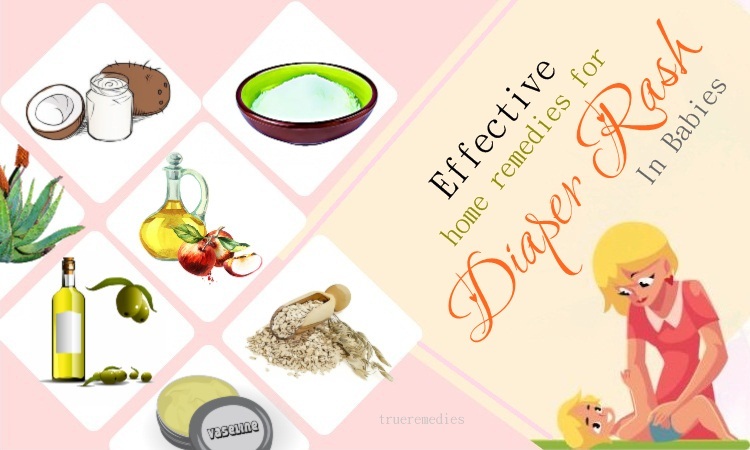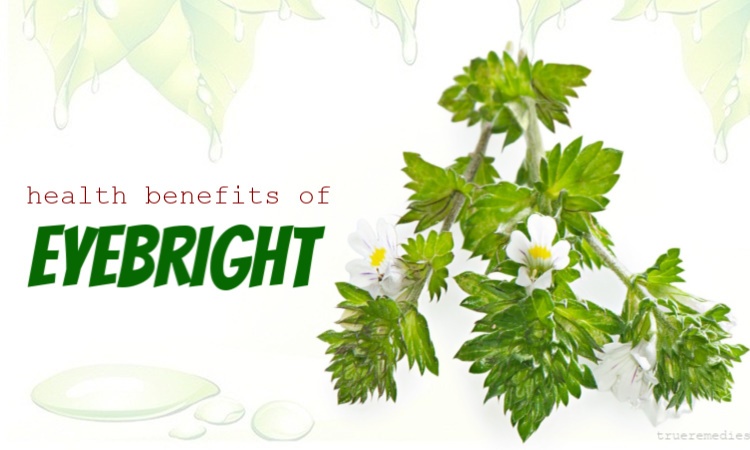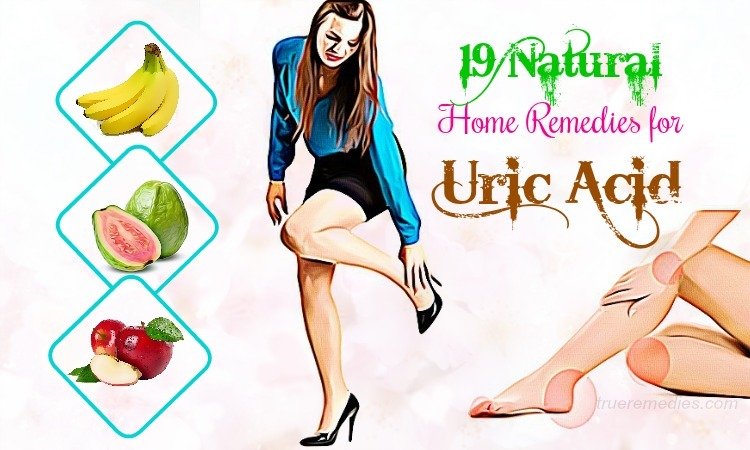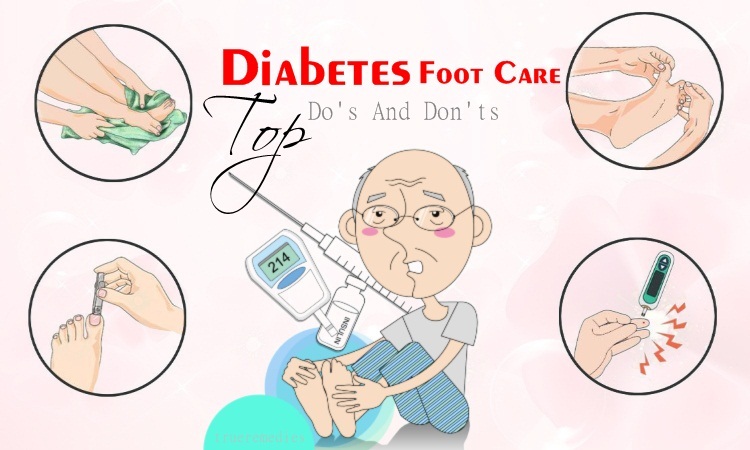updated: 11/30/2019
Contents
For women, having period cramps, also known as menstrual cramps, painful periods or dysmenorrhea, is one of the most commonly annoying parts of their periods. They could strike before or during that particular time of the month. A large number of women suffer from it routinely.
The cramps are felt in the lower back or belly, ranging from mild to severe. For some women, the discomfort is merely annoying while for others, period cramps could be severe enough to impact their daily activities for several days each month. Emotional stress may increase the chance of having period cramps[1]. Period cramps could be treated with hormonal birth control, OTC medicine, and some homemade treatments[2]. This article will help you figure out some effective home remedies for period cramps with easy-to-find ingredients. First of all, you should acknowledge some basics about this condition. Check it out!
- Top 30 Home Treatments For Heavy Menstrual Bleeding Clots
- Top 19 Menstrual Period Diet Do’s And Don’ts
- Top 64 Tips To Stop Heavy Menstrual Bleeding Flow
Top 20 Time-Tested Home Remedies For Period Cramps And Pain In Women
What Are Period Cramps?
A lot of women experience cramps before and during their periods. The pains, in essence, are caused by prostaglandins[3], which is a chemical that the body of a woman produces to make the muscle of the uterus contract. Contracting muscles will help in pushing blood out through the vagina of a woman during her period.
Maybe, you know periods often come once per month. Sometimes, it is not regular in younger girls. They may skip one month. However, when the periods of a woman become more frequent, cramps will be more likely.
They could be rather annoying or extremely painful, and last for several days. At first, girls may worry if they do not understand that cramps are often a normal part of getting a monthly period.
TrueRemedies Partner Solutions

Need a Help from the Leading Expert Online, Available 24/7?
They’re all here and ready to answer your questions online or by phone. Keep asking questions until you get the answer you need.
Causes And Symptoms Of Period Cramps?
Causes Of Period Cramps
It is widespread to feel discomfort around the abdomen, thighs, and lower back when a woman is menstruating[4]. Sometimes, she experiences cramps, which are her muscles at work.
Period cramps and pain happen when the muscular wall of the womb tightens, as mentioned earlier. The mild contract keeps passing through the belly, yet they are often mild that most women could not feel them. During your monthly period, the womb’s wall starts to tighten and contract more vigorously to promote the womb lining to shed away as a regular part of your period. Once the muscular wall of the womb contracts, it will compress blood vessels lining the womb. Temporarily, this will cut off the supply of blood and oxygen to the organ. Due to having not enough oxygen, womb’s tissues release chemicals which trigger pain[5].
While the female body is releasing such pain-triggering chemicals, it also produces other chemicals called prostaglandins[6].
This chemical encourages muscles of the womb to contract more, thereby further boosting the severity of pain. Doctors do not understand why some women experience muscle cramps or have painful menstruation while others do not. Perhaps, it is because some women have a build-up of prostaglandins, meaning that they experience stronger contractions.
Period pain may be caused by a condition, though less common. Doctors call this secondary dysmenorrhoea[7]. The menstrual pain linked to a specific situation may impact older women aged from 30 to 45.
The conditions that may result in period cramps and pain are:
- Endometriosis
- Uterine fibroids
- Pelvic inflammatory disease
- Adenomyosis
Symptoms Of Period Cramps
When having period cramps, you might:
- Feel the pressure in your belly
- Have aching pain in the abdomen and pelvis
- Have pain in the lower back, hips, and inner thighs
When the cramps become severe, the symptoms might include:
- Loose stools
- Upset stomach
- Nausea and vomiting
- Dizziness
- Headaches
- Disorientation
- Hypersensitivity
How Long Will Your Period Pain Last?
Menstrual cramps and pain begin when your bleeding starts, despite some women have cramps a few days before the beginning of their period.
Usually, the pain lasts from 48 to 72 hours. Sometimes, it may last longer. Often, it is at its worst when you bleed the most.
Teenage girls usually have period pain as they start getting period. Period pain which does not have an underlying cause may improve when the woman becomes older. Many women also see an improvement after giving birth[8].
What Are Risk Factors?
- You are under 30 years old
- You began puberty early, at 11 years old or younger
- You have heavy menstrual bleeding during your periods
- You have irregular period bleeding
- You smoke[9]
- You have never given birth
- Your family has one or many members having dysmenorrhea
- You have low body weight
Home Remedies
While we are listing the scientific evidence, the following recipes we've focused on are traditional treatments so proceed with caution depending on your condition. Always consult your doctor before using any remedy.
1. Hot Compress
Applying heat to your belly and lower back may relieve pain. According to a study in 2012, women from 18 to 30 years old having regular menstrual cycles found that a heat patch at 40°C was as effective as ibuprofen[10].
In case you do not have a heating pad, use a hot water bottle wrapped in a towel to apply to your tummy. This alternative will also reduce pain significantly.
You can also soak a towel in water, wring out excess water, and put it in the microwave for about 1 minute. Put it on your lower abdomen. Repeat every several minutes to get rid of the pain. Taking a hot shower or having a warm bath also makes you feel more relaxed.
2. Chamomile Tea
A study published in the Journal of Agricultural and Food Chemistry showed that chamomile tea has pain-relieving properties, not to mention anti-inflammatory properties. This herbal tea has medicinal benefits thanks to compounds, which may fight infections caused by colds and relieve period cramps[11].
Drinking chamomile tea will bring high levels of two compounds in your urine, which are glycine and hippurate. Glycerine is a chemical, which may relieve muscle spasms and could act as a nerve relaxant. High level of glycine may relax the uterus, explaining why tea may relieve period cramps. Hippurate, which is a breakdown product of tea flavonoids, has been associated with antibacterial property. According to researchers, the increased hippurate levels after drinking chamomile tea explains why this herbal tea has the infection-fighting ability.
Directions:
- Heat some water to the boiling point
- Add fresh or dried chamomile to an infuser and place it over your cup
- Pour the hot water into your cup, cover the lid, and let it steep for about 5 – 7 minutes
- Remove the infuser and enjoy the tea.
3. Ginger
Using ginger is one of the simplest home remedies for period cramps relief thanks to its natural medicinal properties. It is effective in relieving pain and inflammation[12] associated with period cramps. Also, ginger is used for an upset stomach and nausea[13], which are two symptoms accompanying by menstruation. The University of Maryland Medical Center also recommended taking ginger twice or thrice per day while going through period cramps.
The warming essential oil of ginger may improve circulation and blood flow, thereby making it an ideal treatment for tired muscles. On the other hand, you can also make use of ginger tea, which is thought to be as effective as ibuprofen for reducing painful periods.
Directions:
- Slice ginger root into pieces
- Peel and cut it into small slices
- Put 2 tablespoons of ginger root pieces into a cup of water
- Boil it up and let it simmer for about 1 hour
- Strain and drink the tea
- If you cannot make ginger tea on your own, buy pre-packaged dried ginger tea bags in supermarkets and follow the directions in its package.
Note:
- Avoid ginger tea if you experience peptic ulcers because it may worsen them. Besides, use too much ginger may lead to mouth irritation, diarrhea or constipation, and heartburn.
- Avoid ginger if you are taking blood-thinning drugs or suffering from a bleeding disorder. Consult your doctor before taking ginger if you suffer from gallstones.
4. Massage With Essential Oils
A study showed that women with menstrual cramps and pain caused by endometriosis found a significant reduction in terms of pain when massaging with essential oils[14]. When the hands of therapists move around your tummy, back, and side and press specific points on it, it will relieve pain and cramps.
Furthermore, adding essential oils to your massage may bring extra benefits, especially for your skin. You can purchase a scented massage oil or make it by yourself. Remember to dilute the essential oil with a carrier oil (grapeseed, sweet almond, or vegetable oil) before using it. Just make sure that you use essential oil safely.
5. Fresh Basil
Eating a handful of fresh basil leaves may help to relieve period cramps and pain. Basil may prevent prostaglandins[15], the chemical substances that perform several functions, including initiating both menstruation and labor. Some women seem to produce an excessive amount of prostaglandins, thereby having more painful cramps. Basil is absorbed quickly into the bloodstream through the mucous membranes of the mouth and inhibits the production of prostaglandins. So, now pick up a basil plant and nurture it in your kitchen. When that particular time of the month arrives, and your menstrual cramps begin, make up a batch of sweet cucumber basil juice to relieve pains.[16]
Directions:
- Add 1 tablespoon of basil leaves to a cup of boiling water
- After covering it up, let it cool down
- Have this solution every few hours to relieve cramps
As an alternative, you could crush a handful of basil leaves to extract its juice. Then, add 2 teaspoons of its juice to a cup of warm water. Have this solution thrice per day during your period. For further benefits, add fresh basil leaves to your daily diet.
6. Cinnamon
Cinnamon is a favorite spice used worldwide and may deal with several conditions, including pelvic pain, diarrhea, and menstrual cramps. There are active compounds in cinnamon[17] with its unique healing abilities, which are cinnamyl alcohol, cinnamaldehyde, and cinnamyl acetate.
Symptoms of painful menstrual cramps may be relieved by using cinnamon thanks to its antioxidants, anti-inflammatory, and antimicrobial benefits. By combating microorganisms, cinnamon reduces inflammation[18]. According to a study carried out by Korean researchers in 2012, cinnamon was one of the essential oils used for aromatherapy massage because it brought a significant alleviation in period cramps and pain[19].
Directions:
- Boil cinnamon in water for about 15 minutes
- Add honey or milk for flavoring and drink it
- Drink this tea regularly, particularly before your period.
- Add cinnamon by sprinkling it over your oatmeal, toast, cereal, main dishes, and snacks.
- Or, you can also sprinkle cinnamon in your coffee grounds upon making a cup of coffee.
- Combining it with other herbs like Lovage Root, Motherwort, or Angelica Root, is also helpful regarding period cramp treatment[20].
- You can also look for cinnamon supplements after consulting your doctor.
7. Diet Changes
Research has proven that a diet plays a vital role in controlling symptoms of period cramps[21]. Maintaining a healthy diet may go a long way to prevent period pains. A study was conducted to find out the differences between menstrual pains in women maintaining a healthy lifestyle and those who do not. It was shown that decreasing fat and increasing veggies in the diet might ease monthly cramps and pain, while the low-fat diet may reduce inflammation in the body.
To have a healthy diet, you should consume fewer saturated fats in animal products, opt for healthier ones such as unsaturated fats in olive oil, according to the American Heart Association (AHA). Also, get 25-35% of your daily calories from healthier fats, which are found in nuts, fish, and veggie oil[22].
Give a try to papaya, brown rice, walnuts, almonds, pumpkin seeds, broccoli, olive oil, chicken, leafy green vegetables, fish and flaxseed. Also, focus on the foods high in boron. This is a mineral that helps the human body absorb calcium and phosphorus and decreases the period cramps[23]. Foods rich in boron are peanut butter, chickpeas, prunes, bananas, and avocados.
You could also take boron supplements in case your diet does not supply enough. Nonetheless, consult your healthcare provider before taking any supplements.
Apart from that, avoid some foods causing stomach bloating and water retention, which are alcohol, fatty foods, carbonated beverages, salty foods, and caffeine.
8. Fish Oil And Vitamin B1
Another natural option is to take fish oil supplements, vitamin B1 or even both of them[24]. It was found that women taking fish oil and vitamin B1 reported fewer signs and symptoms and less pain than those taking regular oil. Fish oil contains omega-3 fatty acids which may help reduce inflammation and interfere with the production of prostaglandins in your body[25]. Dr. William Smith from the University of Michigan said that fatty acids found in fish oils produced few prostaglandins than the omega-6 fatty acids found in veggie sources[26].
Fish oil may lower the levels of prostaglandins, resulting in less blood clotting and vasoconstriction – the leading causes of period cramps. The EPA and DHA found in fish oil may help prevent menopausal problems, postmenopausal osteoporosis, preeclampsia, and even decrease the potential risk of breast cancers.
9. Acupuncture
Among home remedies for period cramps mentioned here, acupuncture may be lesser-known. It is a component of traditional Chinese medicine, which can help stimulate the body at specific points. Acupuncture helps to relax the nervous system, thereby relieving cramps[27]. In detail, relaxing the nervous system will lead to increased blood flow to internal organs.
Acupuncture is even thought to have an anti-inflammatory effect. A report has shown that acupuncture brings more significant improvement in menstrual pain intensity along with related symptoms to womenn[28]. However, you should go for manual acupuncture instead of the electro-acupuncture as the former is more effective in treating menstrual pain.
10. Increase Magnesium In Your Diet
Dietary magnesium may help in easing cramps and pain during menstruation. A Cochrane is an author of Your Healthiest Life Now who reviewed the effectiveness of magnesium on period cramps[29]. He said that getting enough magnesium might assist in relieving pain.
You can find magnesium in various foods. This mineral helps to regulate muscle and nerve functioning, not to mention other vital tasks. The recommended dietary permit of magnesium intake for women of childbearing age is approximately 320 mg every day. Just ½ cup of boiled spinach and an ounce of dry almonds offer 80 mg. However, ask your healthcare provider about the best type of magnesium intake for you.
11. Fennel
Fennel is widely known for its valuable medicinal uses as it has minerals, phytonutrients, and phytoestrogens which act as an anti-inflammatory, antioxidant, and antispasmodic. It may help relax the muscle wall of the uterus, thereby relieving discomfort and cramping[30][31].
Directions:
- Put a teaspoon of fennel seeds into a cup of boiling water
- Let it simmer on low heat for about 5 minutes
- Turn off the heat and strain the tea
- Add a teaspoon of honey and mix them well
- Drink the tea twice per day for 3 days before the starting date of your period
- Keep drinking as necessary
12. Lavender Oil
Lavender oil is well-known for its therapeutic properties[31]. It may induce relaxation, treat burns, and relieve pain and inflammation. The research conducted by Iranian researchers showed that women who inhaled lavender oil felt less pain and cramps. Their menstrual symptoms were also fewer[32].
Directions:
- Combine 5 drops of lavender oil with 1 teaspoon of almond oil
- Put a small amount of this mixture on your tummy
- Massage gently and inhale the remaining oil
- Do this method twice per day for about 1 week
13. Rosemary Oil
Rosemary was placed in the cradles of babies to help protect them from harmful elements in ancient times[33].
While there is no scientific evidence of this folk use of rosemary, this powerful herb has been proven beneficial in different health-related problems, including respiratory illnesses, dysmenorrhea, and colic. Rosemary may prevent the pain signals from being transmitted to the brain. The antinociceptive activity of rosemary has been confirmed in some studies[34]. Those studies used animal subjects that were induced with pain to show off how effective rosemary is. The results were remarkable, but further trials on humans, especially on female subjects with menstrual cramps, are needed.
Directions:
- Combine 5 drops of rosemary oil with 1 teaspoon of olive oil
- Then, spread a thin layer of the mixture on your tummy
- Massage gently
- Repeat this routine twice per day for 3-4 days
14. St. John’s Wort
St. John’s Wort is one of the oldest and most widely researched herbal treatments. It is licensed as a popular treatment for anxiety, depression, and sleeping disorders[35]. Moreover, this herb may treat other types of diseases, like the pain associated with menstruation.
A study carried out by researchers from the University of Exeter in the UK proved that women using St. John’s Wort reported remarkable improvement in symptoms of premenstrual syndrome or menstrual cramps[36].
Directions:
- Boil 1 cup of water in a pot
- Add 2 teaspoons of dried St. John’s Wort into the boiling water and stir well
- Remove from the heat and strain the tea
- Have this remedy before your bedtime
15. Lemon Juice
Lemon has anti-inflammatory properties[37], which may provide relief from menstrual cramps. Furthermore, thanks to the high content of vitamin C, lemon may help your body absorb iron more efficiently[38]. Women lose iron through blood loss during menstruation, so it is crucial to get more iron from food and supplements. Iron is also good for your reproductive organs.
Directions:
- Squeeze half a lemon into a glass of warm water
- Mix them well and add honey if you want
- Drink on an empty stomach every morning
16. Aloe Vera
Thanks to its anti-inflammatory and healing properties[39],aloe vera is a potent ingredient for reducing cramps and pains during the period. By improving blood flow, aloe vera may decrease the cramp intensity[40].
Drink ¼ cup of aloe vera juice several days before and during your menstruation to reap its benefits.
17. Green Tea
Green tea has flavonoids called catechins, which have medicinal properties. This plant is a natural antioxidant and has anti-inflammatory and analgesic properties[41], helping relieve inflammation and pain accompanied by menstrual cramps.
Directions:
- Add green tea leaves to a cup of water
- Boil it up and let it simmer for 3-5 minutes
- After straining, let it cool down and add honey if you want
- Have it 3-4 times per day
18. Exercise
This sounds crazy when you have cramps and pain due to menstruation, but it does work. Exercise could help in lessening the pain and uplift your mood when you go through the menstrual period[42]. Recommended directions include doing aerobic exercises for about 30 minutes per day during your menstrual period[43]. Also, avoid engaging in too strenuous activities because they might worsen your symptoms.
19. Sleep And Rest Well
Rest and sound sleep when necessary, are very important to minimize the period cramps and pain[44].
Nothing will be more nourishing to your general health than rest and sound sleep. This is even more important when you are in your menstruation and experiencing cramps.
A study has shown that insomnia, irregular sleep, and hectic lifestyle may make you fatigued and exaggerate your period cramps. By sleeping and having proper rest, you may calm your nervous system and lower the symptoms of menstrual disorders.
Additional Tips
- Eat Yogurt: Yogurt has a high content of calcium and vitamin D[45]. Taking these vitamins and minerals will help in decreasing menstrual cramps and PMS symptoms[46]. Eat a bowl of plain yogurt 3-4 times per day when you are in your menstruation time.
- Consume Papaya: Papaya is a potent anti-inflammatory agent[47], which is beneficial in treating period pain. Besides, it possesses nutrients such as iron, carotene, vitamins A and C, calcium[48] that may soothe uterine walls and relieve muscle contractions. Thus, before and during your menstruation time, you can add papaya to your diet to eradicate the pain.
- De-stress: Stress and anxiety increase your cortisol levels[49], thereby suppressing thyroid function, affecting blood sugar levels, and compromising your immune system. That is why you should take control of your stress to avoid exaggerating your cramps during periods[50].
When To See A Doctor?
If your period cramps disrupt your daily life monthly, and if your symptoms worsen progressively, or if you are older than 25 years old and started having period cramps severely, then you should see your doctor.
Have you ever tried these natural home remedies for period cramps and pain? Which ones do you choose? Do you have any other solutions to deal with menstrual pain? Feel free to share your experience with us by dropping words below this post.

